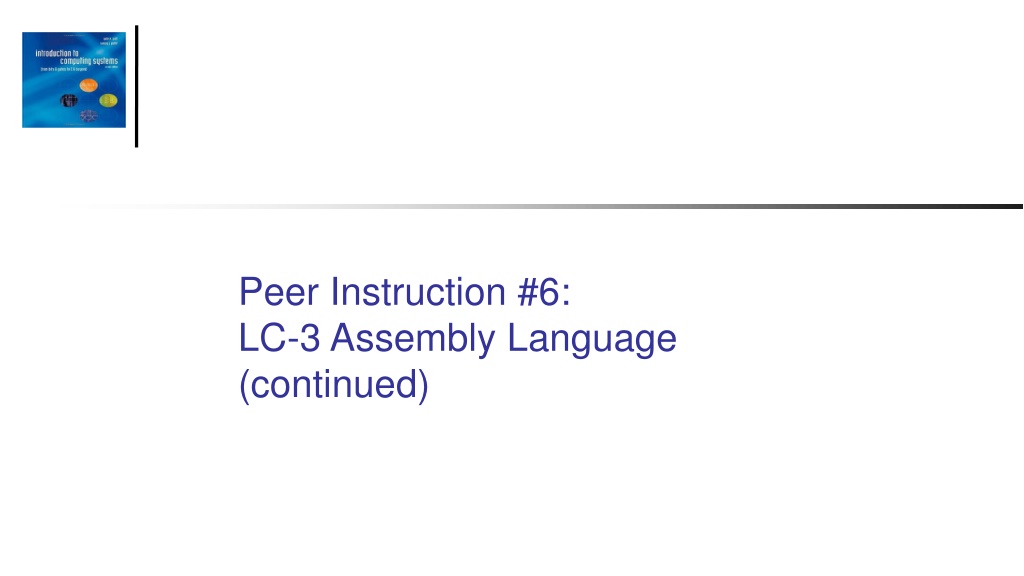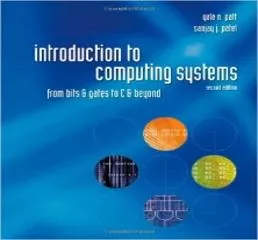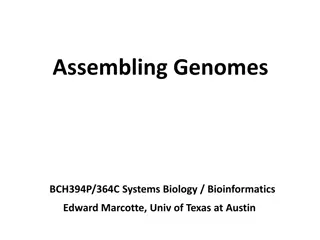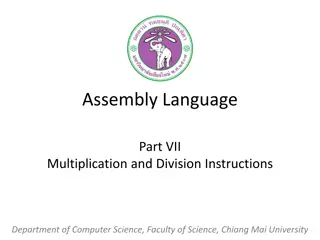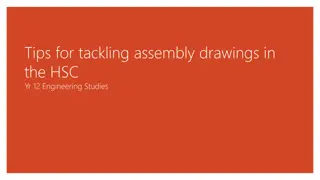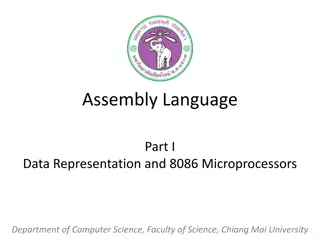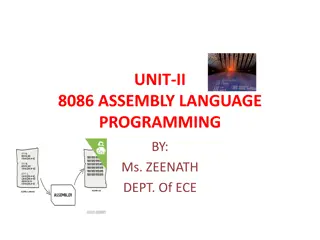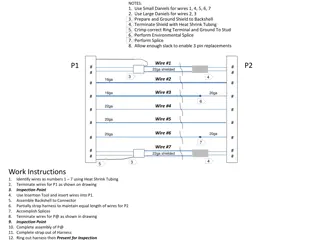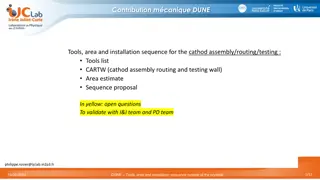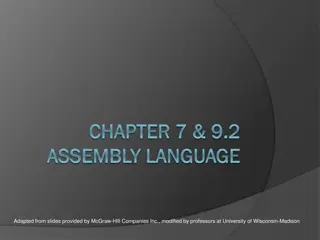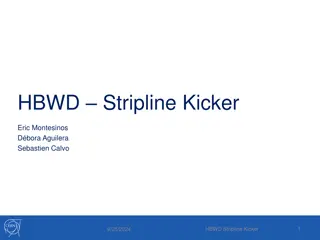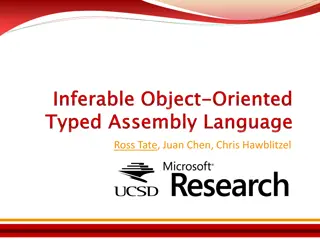LC-3 Assembly Language Practice Questions
Practice translating LC-3 instructions into assembly code, determining register values, and analyzing branching instructions in this set of interactive exercises. Test your understanding of LC-3 architecture with examples involving various instructions and scenarios.
Uploaded on Sep 21, 2024 | 0 Views
Download Presentation

Please find below an Image/Link to download the presentation.
The content on the website is provided AS IS for your information and personal use only. It may not be sold, licensed, or shared on other websites without obtaining consent from the author.If you encounter any issues during the download, it is possible that the publisher has removed the file from their server.
You are allowed to download the files provided on this website for personal or commercial use, subject to the condition that they are used lawfully. All files are the property of their respective owners.
The content on the website is provided AS IS for your information and personal use only. It may not be sold, licensed, or shared on other websites without obtaining consent from the author.
E N D
Presentation Transcript
Peer Instruction #6: LC-3 Assembly Language (continued)
Translate the LC-3 instruction 0x4840 into LC-3 assembly code: A. JSR Label (Label at PC + 0x3F) B. JSR Label (Label at PC + 0x40) C. JSRR R3 D. JSRR R1 E. None of the above
Translate the LC-3 instruction 0xC1C0 into LC-3 assembly code: A. JMP R7 B. RET C. Both of the above D. None of the above
Translate ADD R0,R1,x10 from assembly code into an LC-3 instruction in hexadecimal: A. 0x1040 B. 0x106F C. 0x1070 D. 0x107F E. Cannot be done!
DATA .FILL 0x1234 LD R5,DATA AND R5,R5,#15 NOT R5,R5 What value is in R5 after the above code? A. 0x123F B. 0xEDCB C. 0xFFFB D. 0xFFFC E. None of the above
.ORIG x3000 AND,R1,R1,#0 ADD R1,R0,#1 BRp MAIN Is the branch taken in the above code? A. Yes B. No C. Depends on initial value of R0 D. Depends on initial value of R1 E. None of the above
Which instruction branches to Main if R0 is less than or equal to 12? Twelve Main LD R1,Twelve NOT R1,R1 ADD R1,R1,1 ADD R0,R0,R1 ??? Main .FILL x000C A. BRn B. BRz C. BRp D. BRnz E. BRzp
What is the value in R0, and the instruction associated with the LOOP label when the program reaches the HALT command? A. 5, ADD R0, R0, #3 B. 8, ADD R0, R0, #7 C. 3, ADD R0, R0, #5 D. 7, AND R0, R0, #7 E. None of the above AND R0, R0, #0 ADD R1, R0, #2 LOOP ADD R0, R0, #3 LD R2, LOOP ADD R2, R2, #2 ST R2, LOOP ADD R1, R1, #-1 BRp LOOP HALT
What are the values in R0,R1,R2 after the code below executes? Assume the Main label is at address x3000. A. x4321, x3003, x7324 B. x4321, x3004, x7324 C. x4321, x3003, x4321 D. x4321, x3004, x4321 E. None of the above Main LD R0,Data LEA R1,Data LDR R2,R1,0 HALT Data .FILL 0x4321
What is the value in R0 and R1 after the code executes from Main label? Array .FILL x1133 .FILL x2244 .FILL x3355 Main NOT R1,R1 LEA R2,Array LDR R0,R2,2 LDR R1,R2,3 HALT A. x1133, x2244 B. x2244, x3355 C. x3355, x903F D. x3355, x927F E. None of the above
What is the PC offset field in the ST instruction shown below? Data0 .FILL x1234 Data1 .FILL x2345 Data2 .BLKW 1 Main LD R1,Data0 LD R2, Data1 ADD R3,R2,R1 ST R3,Data2 A. 0b111111011 B. 0b111111100 C. 0b111111101 D. 0b100000100 E. 0b100000101
Match the LD R0, Var assembly instruction to the corresponding C statement LC3 Assembly Code: .ORIG x3000 var .FILL x0004 ptr .FILL x3000 LD R0, var C Code: int var = 4; int *ptr = &var; int R0; // what goes here? A. R0 = var; B. R0 = &var; C. R0 = *ptr; D. None of the above E. All of the above
Match the LEA R0, Var assembly instruction to the corresponding C statement LC3 Assembly Code: .ORIG x3000 var .FILL x0004 ptr .FILL x3000 LEA R0, var C Code: int var = 4; int *ptr = &var; int R0; // what goes here? A. R0 = var; B. R0 = &var; C. R0 = *ptr; D. None of the above E. All of the above
Match the LDI R0, Ptr assembly instruction to the corresponding C statement LC3 Assembly Code: .ORIG x3000 var .FILL x0004 ptr .FILL x3000 LDI R0, ptr C Code: int var = 4; int *ptr = &var; int R0; // what goes here? A. R0 = var; B. R0 = &var; C. R0 = *ptr; D. None of the above E. All of the above
Match the LD R1, PTR and LDR R0, R1, #0 assembly instructions to the corresponding C statement LC3 Assembly Code: .ORIG x3000 var .FILL x0004 ptr .FILL x3000 LD R1, ptr LDR R0, R1, #0 C Code: int var = 4; int *ptr = &var; int R0, R1; // what goes here? A. R0 = var; B. R0 = &var; C. R0 = *ptr; D. None of the above E. All of the above
